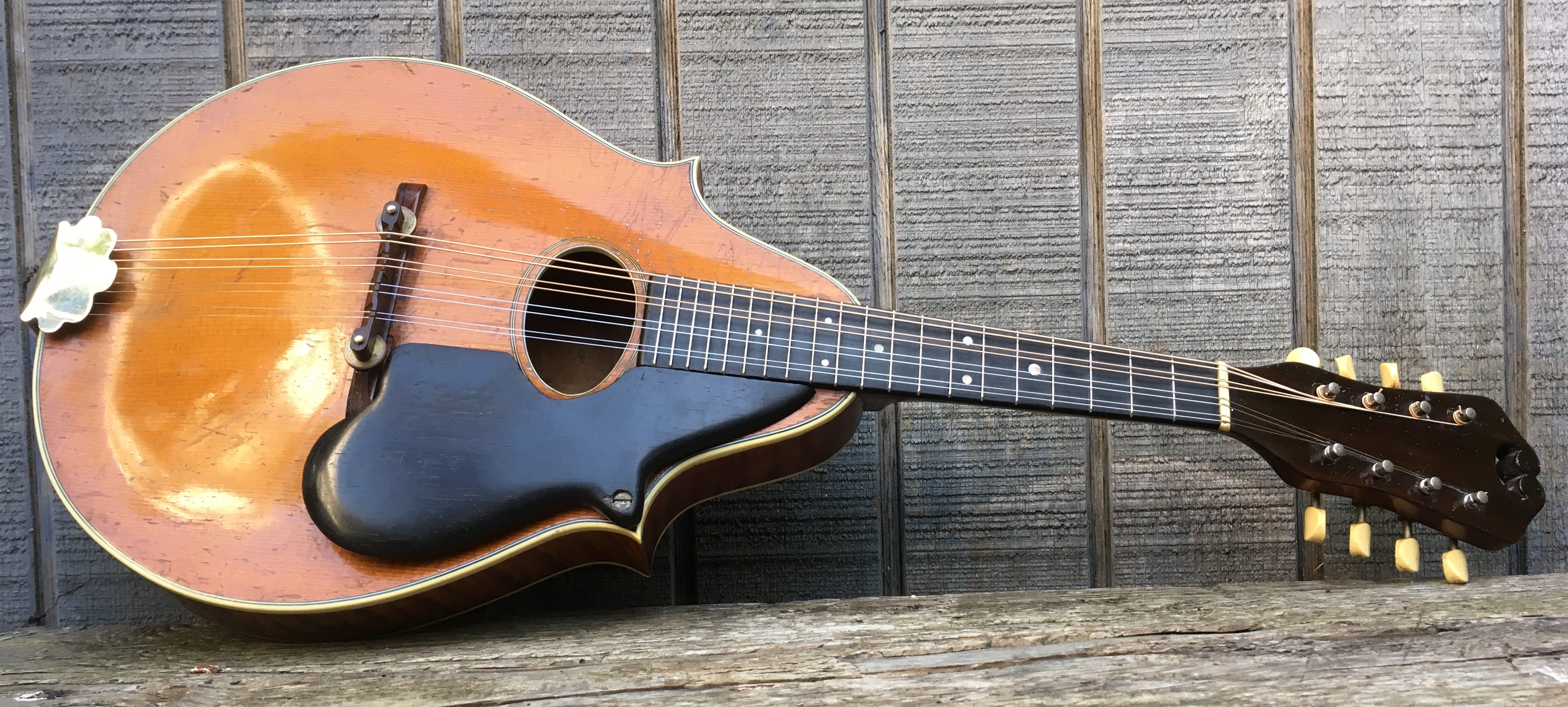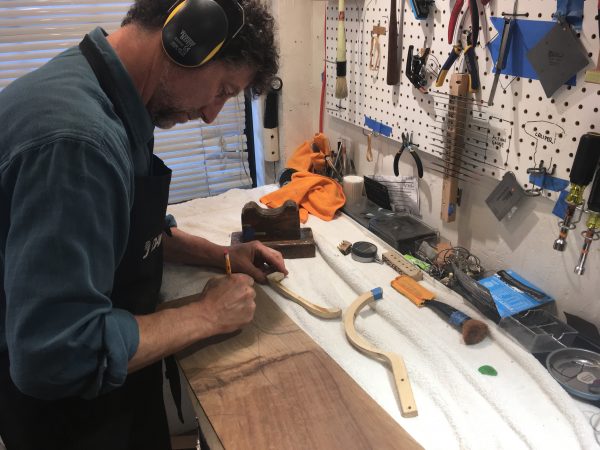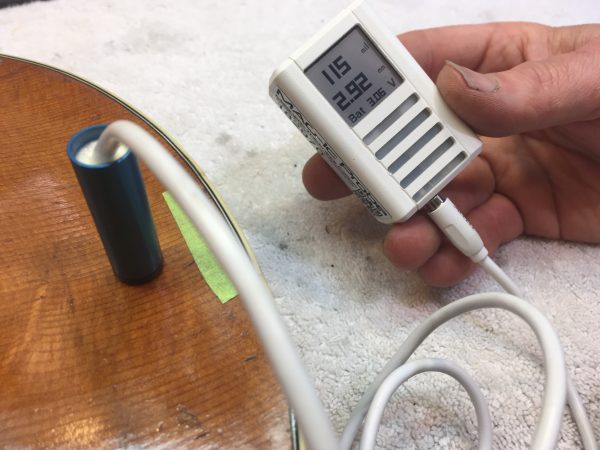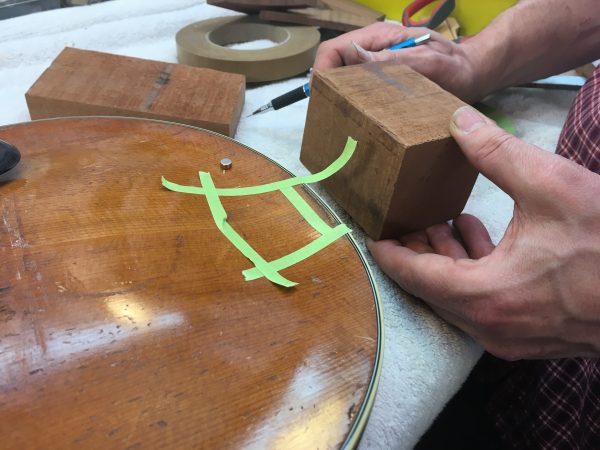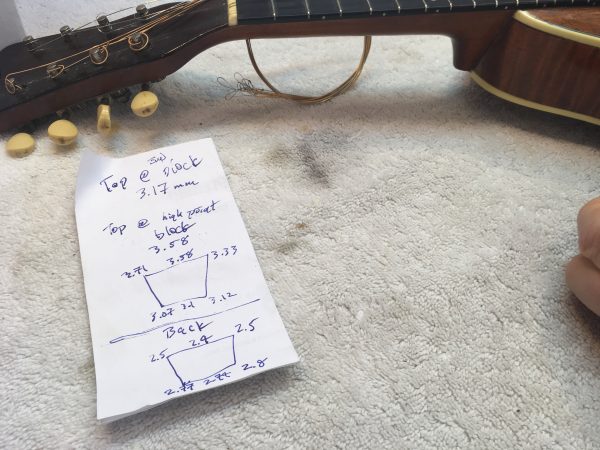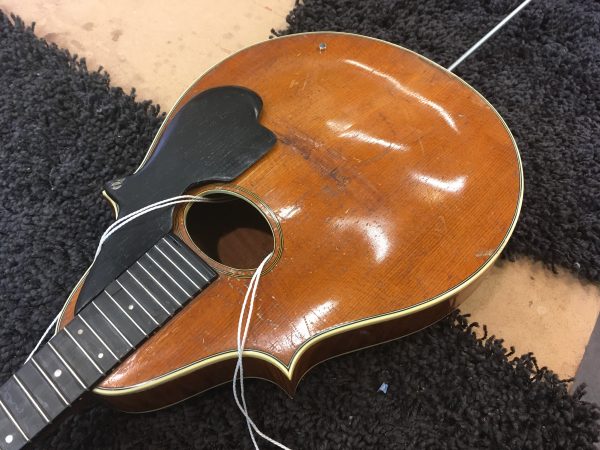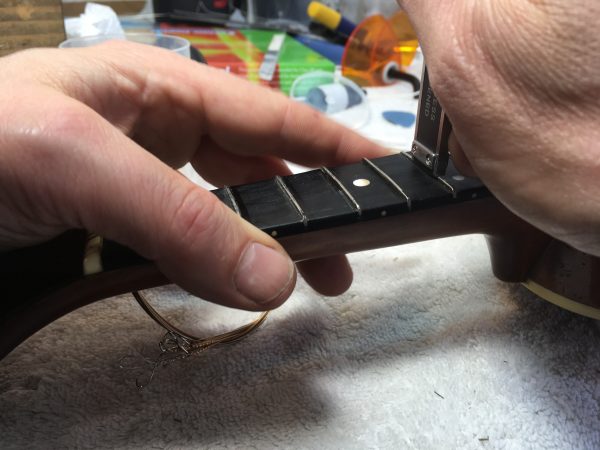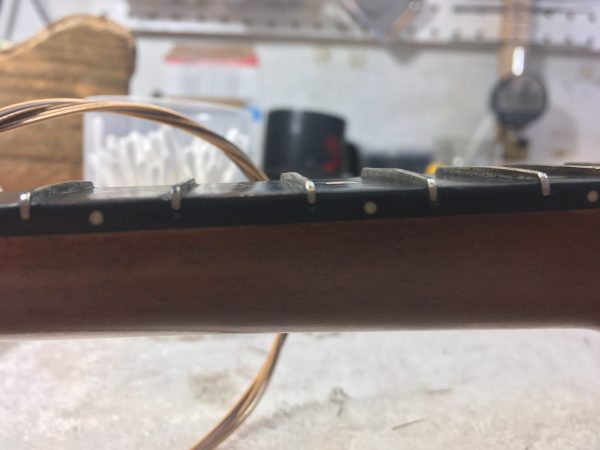Raising The Bar(s)
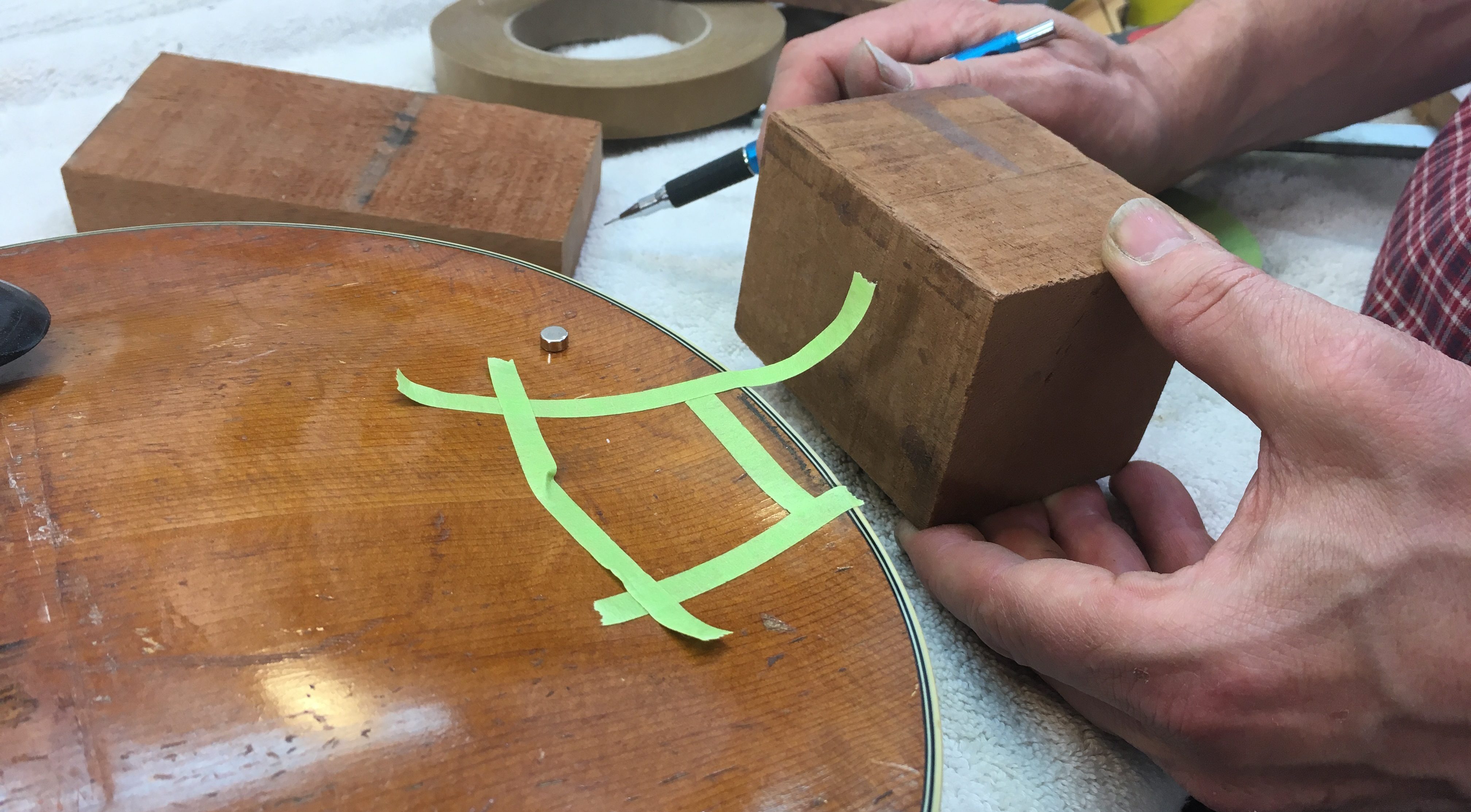
Recently, we had the pleasure of resurrecting this rare and unique 1920s Martin Style-20 mandolin. Due to age, string tension, light bracing and a tiny tail block, the top of the Mandolin had sunk between the bridge and tail, causing the bridge to sit very low on the body making the action too low to play. Additionally, the frets were worn and uneven, causing buzzing and choked notes. Despite the extensive work needed, the customer’s decision to have us restore it was an easy one due to the unique history and cool details of the Style-20.
It was not only the first mandolin made by Martin with a carved top and back, but the production runs on this model were low, at around 200 produced in total, making it rare. Although similar to the typical A-style mando, the Style-20’s slightly larger body gives it a nice midrange sound, allowing for a distinct and mellow tone. The double-point teardrop body with flamed maple back is unique as well. We were excited to get started on the repairs in order to hear this instrument’s unique and tasty sound.
Repairing the Top
The first step was to get the top back into its original shape. In order for the top to move safely without damage, we needed the wood to be pliable – this is fairly easily achieved through warming the instrument with a heat lamp. Once we were sure the top would move without cracking, we made a wood lever, inserted it into the sound hole and pushed the top up until the top carve was even all around. Once we were confident we had raised the top back to its original shape, the lever was clamped into the instrument and allowed to sit for 48hrs, letting the top stabilize in its new shape.

Inserting the lever

The lever clamped
Creating a New Tail Block
The next step was to make and install a tail block extension that would support the top and keep it from caving again. To do this, we used a MAGic-probe (a magnetic caliper that allows you to measure the thickness of an object without having to clamp around it) to determine the thickness of the top and back of the instrument. When we had those measurements, we subtracted them from the outer dimension of the instrument to arrive at the dimension of the tail block Once the new dimensions were clear, we designed a new tail block and inserted it into the mandolin via the sound hole. With the block attached to a string, threaded through the mandolin’s endpin hole, we simply pulled it tight to the original tail block, and voila, supported top.
Raising and Leveling the Bar Frets
With the new block in place, we needed to take care of the extremely low and chewed up frets. Like many vintage Martin instruments from this era, the Style-20 is equipped with bar frets. The essential difference between a bar fret and a standard modern fret is the shape. Modern frets are shaped like a ‘T’ with a tang under the crown. These are pushed into narrow fret slots, and have a crown, the part you play on, available in many sizes. A bar fret, on the other hand, is simply a strip of metal with no tang – literally a bar. Since there is no separate tang and crown on bar frets, if there is not enough fret height to level them, it is common practice to lift the fret slightly in the slot and then level the fret tops, so that’s exactly what we did!
With a functional top and newly leveled frets, this old mandolin is playing and sounding as sweet – if not sweeter – than the day it was made almost 100 years ago. And after it’s makeover, this thing is good to go for another century!
